Dying to swim in Chicago: Race riots and the ‘Red Summer’ of 1919
How the drowning of a Black boy led to two weeks of racist violence and exposed the segregation at the heart of Chicago.
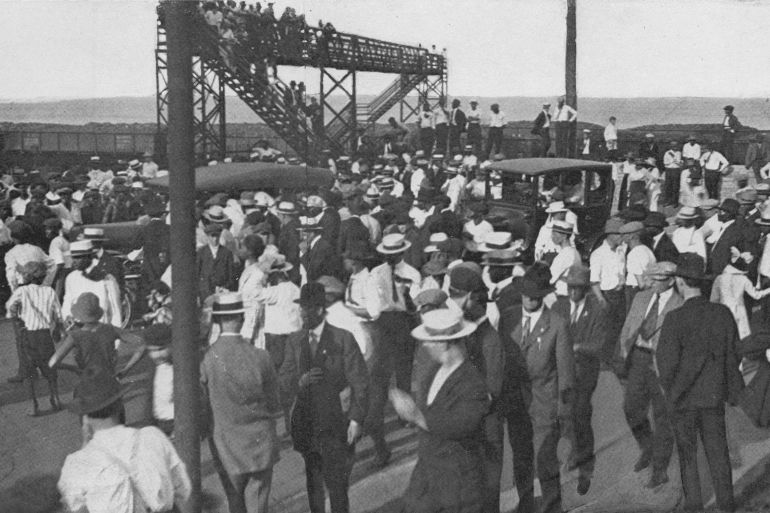
It is easy to miss the plaque nestled amidst the trees and expanse of lawn near 29th Street along the lakefront on Chicago’s South Side. Paid for by York High School students in the predominantly white suburb of Elmhurst, 26km (16 miles) east of Chicago, it was installed in 2009. But, today, 102 years after one of the longest and bloodiest race riots in the city’s history, few Chicagoans are aware of the marker or the events it commemorates.
According to Peter Cole, founding director of the Chicago Race Riot (CRR19) project, “no one in Illinois actually thinks about or remembers the Chicago race riot of 1919, let alone its legacy.”
Keep reading
list of 4 itemsWhy does the US mythologise its former presidents?
From lynchings to the Capitol: Racism and the violence of revelry
This Land Is … whose land?: The history of Woody Guthrie’s song
This absence of collective memory and lack of recognition of the significance of the event is due in part to lax record-keeping about the riot, and the slipshod way in which the media covered the story. As Robert Loerzel concluded in 2019 when he tried to write a story on the incident that triggered the race riot, even the most basic facts about the Black teenager and other key actors at the centre of the story were unavailable. Loerzel argues that: “This was typical of journalism in the early 20th century. For one thing, few newspapers reported in depth about the lives of Black Chicagoans.”
‘Make this beach Atlantic City’
Parks and open spaces are important to Chicagoans. The city is blessed with miles of beaches and is well-endowed with parks. It opened the first public beach in 1895 in Lincoln Park, on the city’s North Side. In 1919, Chicago had 82 playgrounds, 14 of which were in Black neighbourhoods. Of the eight public bathing beaches, three were in Black communities. But the city’s white residents expected Black Chicagoans to confine themselves to just one of these – the 26th Street beach.
The beach was utterly unattractive and difficult to access. Visitors had to traverse a rough road that ran through a decrepit neighbourhood, then ascend a long flight of stairs to a four-foot-wide viaduct that passed over the railroad tracks, roundhouse, and switchyards. The one-block long strip of sand was 15 metres (50 feet) wide, narrowing at the end that abutted the railroad tracks and hemmed in at the other by a high embankment.
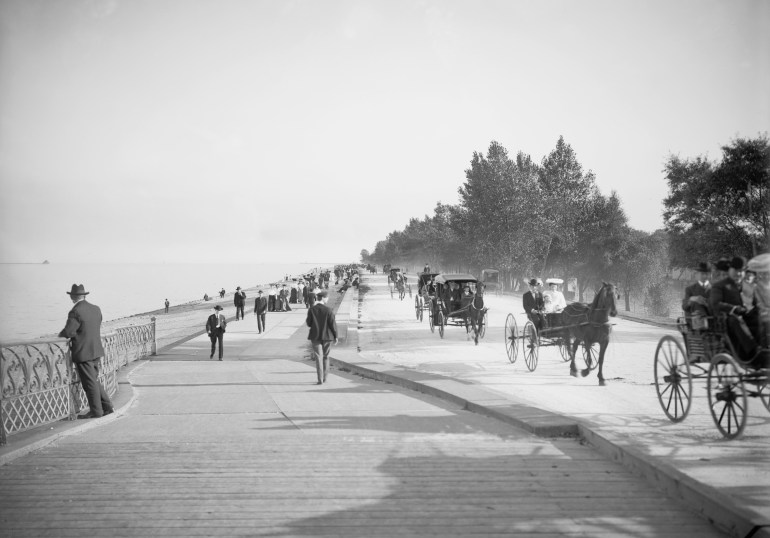
During the long, hot summer of 1919, the Chicago Defender and the Whip, two of Chicago’s leading Black newspapers, encouraged Black Chicagoans to make use of the other public beaches as well. Despite the fact that white gangs often harassed and brutalised Black people in the city’s parks, playgrounds and beaches, the papers saw these as democratic spaces that should be enjoyed by all residents of the city.
In particular, the Black newspapers urged Black people to also visit the 25th Street beach, with the Defender pointing out that there were free towels and lockers and the Whip listing attractions that included “bathing beauties” and a courteous and helpful Black lifeguard. The Whip implored Black Chicagoans to “make this beach [their] Atlantic City.”
Roaming gangs and hurled projectiles
In the early 20th century, outdoor enthusiasts and nature groups urged middle- and working-class white people to spend time outdoors to reinvigorate themselves after long hours of humdrum factory work, while Black social clubs, churches, community organisations, and newspapers, sent a similar message to Black Americans.
Banned from membership of white resorts, Chicago’s Black elite (like middle- and upper-class Black people around the country) created all-Black resorts. Among those who owned cabins, cottages or plots on the roughly 1,200-hectare (3,000-acre) resort around the private lake at Idlewild, Michigan – the Black resort closest to Chicago – were the pioneering heart surgeon and co-founder of Provident Hospital, Daniel Hale Williams, WEB Du Bois, one of the founders of the National Association for the Advancement of Colored People (NAACP) and the first Black person to receive a PhD from Harvard University, fiction writer Charles Waddell Chestnutt, millionaire businesswoman Madam CJ Walker, and the first Black female lawyer to practice before the US Supreme Court, Violette Nealey Anderson.
But Black people who could not afford to go to private resorts depended on the city’s public recreation facilities. White residents, however, bristled at the idea that they should have access to public parks and beaches, and while these spaces were not officially segregated, the reality was different.
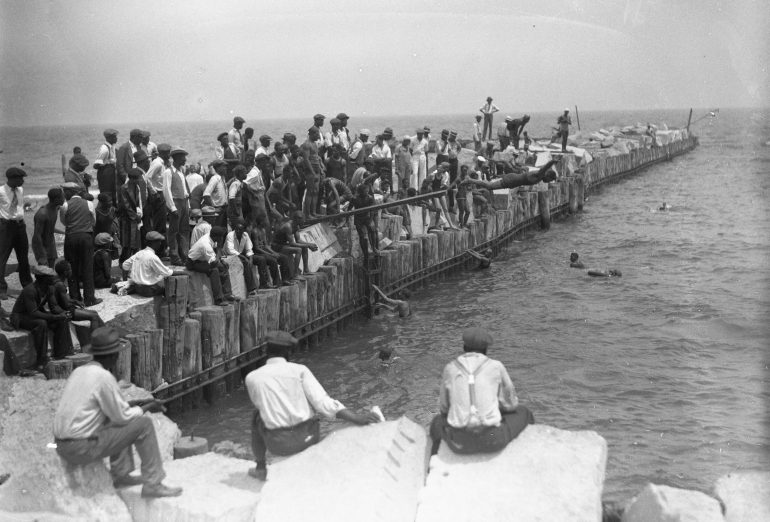
Parks and recreation staff, police officers and white users devised and enforced segregationist practices that restricted which facilities Black people could use. Italian youths in the Vincennes Club and similar groups, enforced the social order of whiteness at the 38th Street beach, while gangs of young Irish men like those affiliated with the Ragen’s Colts, roamed the 29th Street beach and the surrounding area in their efforts to enforce the separation of the races that they espoused.
In 1913, the Juvenile Protective Association (JPA), a private nonprofit founded in 1901 by the renowned social reformer Jane Addams, reported that “even the waters of Lake Michigan [are] not…available for coloured children.” A secretary from the Young Men’s Christian Association described how when they tried to take Black boys to the lake, they were always waylaid by gangs of white boys on 31st Street who hurled projectiles at them.
Even on those beaches where there was nominally integration, Black people would use one portion of the beach and white people another.
The straining Black Belt
The segregation of outdoor spaces mirrored that of living and workspaces. Strict residential segregation, enforced by banks, realtors, homeowners’ associations, white native-born and immigrant segregationists, and ethnic street gangs and “athletic clubs,” shoehorned increasing numbers of Black residents into a 31-block long, four-block wide strip of the South Side called the Black Belt.
The Black Belt slowly expanded over time, developing its own socioeconomic stratification, with the poorest Black residents living in the northern portion of the belt while the more well-to-do lived in the southern part.
Living conditions in the Black Belt were horrific. Severe overcrowding was partly to blame. In the early 1900s, large numbers of Black people, part of the Great Northern Migration, fled the sharecropping system, catastrophic crop failures, racial oppression, and violence of the South for factory jobs in northern cities like Chicago. Chicago’s Black population more than doubled in a decade – going from 44,103 in 1910 to 109,594 in 1920.
The influx of Black residents marked a profound shift in the demographic composition of the city. Black people constituted 11 percent of the population of the South Side in 1910 but a decade later, they comprised 24.6 percent of the area’s residents.
The new arrivals poured into the Black Belt at a time when the city was experiencing a severe post-war housing shortage. The substandard housing – without proper indoor toilets, plumbing, heating, or ventilation – was strained to its limits.
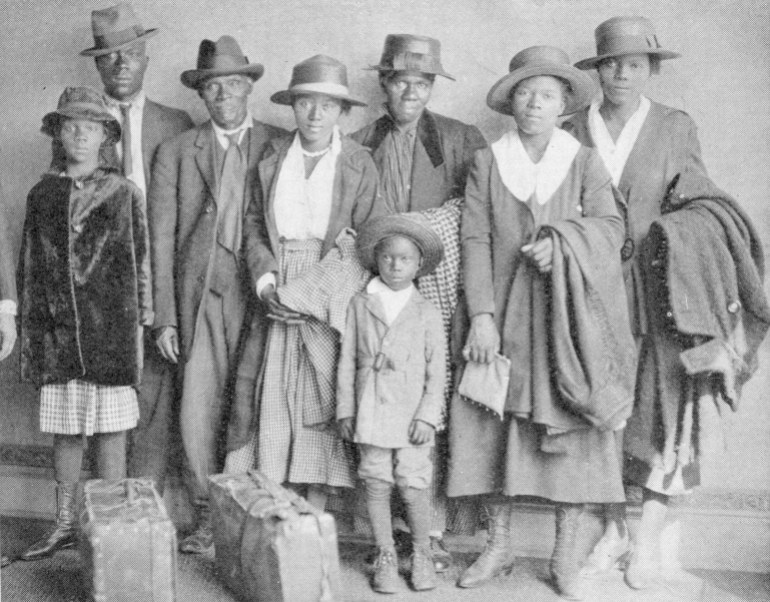
While the Black Belt provided relatively easy access to jobs in the steel mills, meatpacking plants, garment factories, and at the rail yards, intolerable living conditions led Black residents to seek housing in other parts of the city. But those who succeeded in buying or renting in formerly all-white neighbourhoods bordering the Black Belt or on the West Side or North Side were perceived as “invaders” whose presence lowered property values.
“Pioneering Blacks” – as the first Black people to move into white neighbourhoods were called – were often met with firebombs, destruction of property, threats, and violence. Twenty-four firebombings were reported between 1917 and 1919. In 1918, homeowners in South Side communities like Kenwood and Hyde Park launched a “make Hyde Park white” campaign.
What these white homeowners either did not know or had forgotten was that Black people have lived in Chicago since 1790 when Jean Baptiste Point du Sable became the first non-Native American settler to build a house on the north bank of the Chicago River. Du Sable, a Black man, is recognised as a founder of Chicago, and fugitive enslaved people established a Black community in the city in the 1840s.
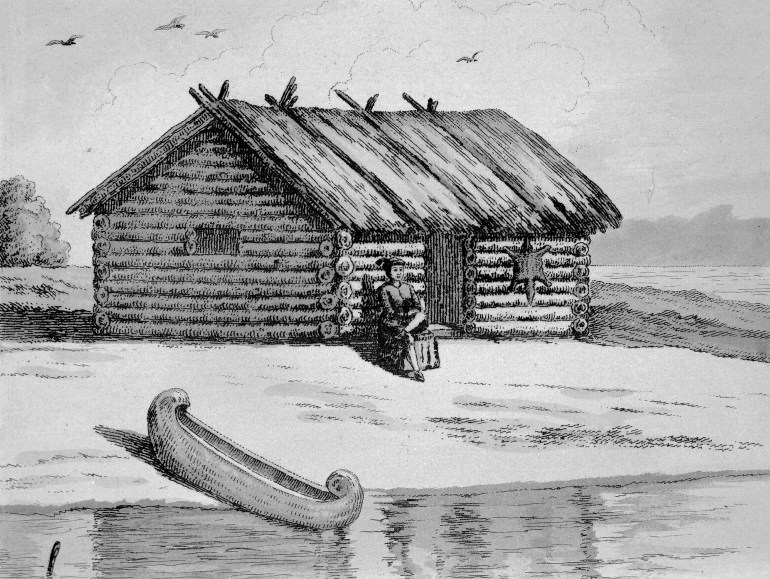
Other aspects of Black life were controlled by segregationist policies and practices as well. Workplaces were sites of conflict, tension, and racial domination. Black people who came north to work in the factories found themselves cast in the role of strikebreakers and were excluded from labour unions. They were perceived as invading hordes taking jobs from native-born and immigrant white people. When hired, they were relegated to the worst, lowest paying, and most hazardous jobs.
White ethnic groups such as the Irish, Italians, Germans, Polish, and Greeks – many of them immigrants – organised themselves into social clubs, gangs, and other collectives to protect their climb up the ladder of economic mobility, acceptability, and respectability, while subjugating Black people to enhance their stature and protect their gains.
A fateful Sunday
Sunday, July 27, 1919, was sweltering as the temperature climbed to 35 degrees Celsius (96 F). On that fateful day, Black and white Chicagoans descended on the beaches along the city’s waterfront. On the South Side, most Black residents headed to the “Black beach” at 25th Street, while white residents went to the “white beach” at 29th Street. White gangs monitored the shoreline, confronted Black people, and saw to it that they stayed on their designated beaches.
As a group of five Black teenage boys were about to find out, the lines of segregation did not stop at the water’s edge; they extended well into the waters of Lake Michigan. The teenagers were 14-year-old John Harris, two brothers – Charles and Lawrence Williams – Paul Williams, and Eugene Williams. Only two of the Williamses (Charles and Lawrence) are related. All the boys except Eugene lived south of 26th Street. Eugene, who met the boys at the beach that day, lived about 15 blocks to the north on the 3900 block of Prairie Avenue.
Seventeen-year-old Eugene was born in Georgia on March 10, 1902, but he moved with his parents, John and Luella, to Chicago’s Black Belt when he was six or seven years old. He had recently graduated from school and worked as a grocery store porter, earning $18 per week (the equivalent of $284.15 per week today). He was, according to John Harris, “just a regular kid like us …. He was a pretty smart boy …. We met him and we liked him.”
To get to their lakefront destination, the boys hitched a ride on a produce truck, got off at Wabash Avenue and 26th Street then started walking east towards the beach. They walked the seven blocks to the shoreline at a brisk pace, at times jogging. They did not linger on the streets between the streetcar tracks and the beach because this was Irish gang territory, and they had been attacked and stoned in the past.
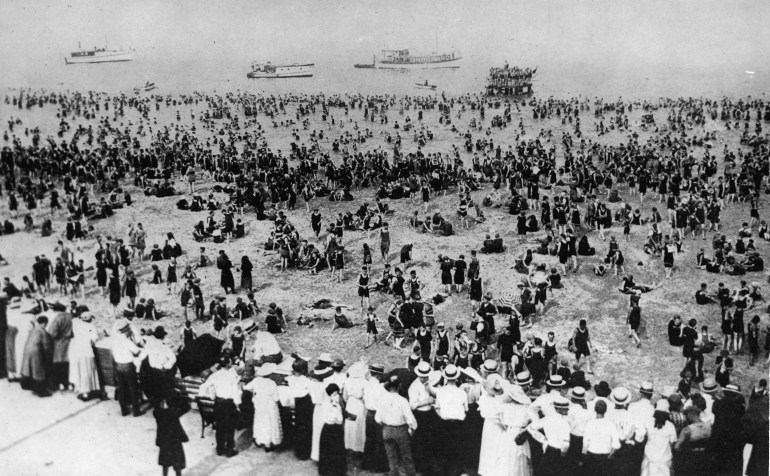
By the time they crossed the Illinois Central Railroad tracks, arrived at 26th Street beach and got on their makeshift raft, it was about 2pm and the boys were giddy with anticipation of the fun that awaited them.
But racial tensions in the city were running so high that, as Walter White wrote in Crisis, the official publication of the NAACP, “…only a spark was needed to ignite the flames of racial antagonism.”
The boys got on their raft near Hot and Cold at 26th Street and set out on the lake. Hot and Cold got its name from the toxic effluents that gushed from the Keeley Brewery and Consumers Ice factory. The discharges were so toxic that the water behind the factory temporarily bleached Black swimmers. John Harris recalled that “I would be as white [as a white man] when I got done – so actually no women or nothing ever come through, so we [often] didn’t even wear a [bathing] suit [when we went swimming there]”.
Even a century ago, racial inequality was inextricably linked to environmental inequality. In a city blessed with ample beaches and abundant fresh water, the water that Black people were expected to swim in was a noxious, unhealthy soup. Today, some Black Chicagoans living on the city’s far South Side reside in what residents call the Toxic Doughnut – a neighbourhood with one of the highest concentrations of hazardous waste sites in the country, including 50 abandoned dumps, more than 380 industrial facilities, abandoned factories, incinerators, and the Calumet Water Reclamation Plant, a water treatment facility, that discharges millions of gallons of dirty, odoriferous wastewater into the Little Calumet River which runs right by the community. A 1992 National Law Journal article reported that the local waterways are so toxic that state of Illinois inspectors who were testing a dumping lagoon had to abort their mission when the boat they were in started to disintegrate.
An hour or so before the boys started guiding their raft from the 26th Street beach towards a marker several hundred yards offshore, a small group of Black men and women had gone to the 29th Street beach determined to use it. They were chased away by stone-throwing white people, but it was not long before a second wave of Black beachgoers arrived. This larger group temporarily took over the beach, but the white beachgoers returned with reinforcements, and a brawl ensued.
Unaware of the fracas on the beach, or that they had crossed an invisible line in the water, the boys continued to head for the marker.
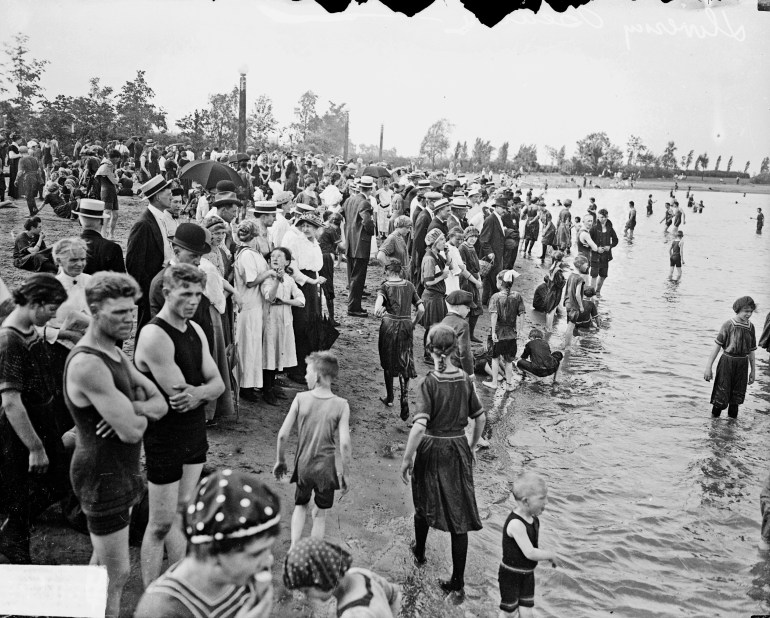
There are multiple versions of what happened next, but in the most commonly repeated one, a white man on the breakwater spotted the raft and began hurling rocks at the boys. Eugene and his friends thought it was a game and did not fully comprehend the danger they were in until it was too late. They figured that so long as they could see the projectiles and duck out of the way, they would be safe. They miscalculated.
More than 50 years later, John Harris described the events that transpired to William M Tuttle Jr, a professor at the University of Kansas and author of the 1970 book Race Riot: Chicago in the Red Summer of 1919. “We were watching him…he’d take a rock and throw it, and we would duck,” said John, adding, “[We didn’t think he could hit us] because after all, a guy throwing that far [75 feet] is not a likely shot. And you could see the brick coming.”
But as Eugene resurfaced, a rock hit him on the head. He slumped back into the water. John dived in to try to help but panicked when Eugene grabbed onto his ankle. By the time he untangled himself from Eugene and resurfaced, John was gasping for air, panic-stricken, and shuddering. By now there was blood in the water. John left the raft, and dog-paddled and swam as best he could until he reached the 25th Street beach where he summoned the head lifeguard, Butch, who called for a boat to go and help. The divers from the boat pulled Eugene’s lifeless body from the lake at approximately 4pm, about half an hour after he was hit.
‘They started running’
George Stauber, a 24-year-old baker who lived on Cottage Grove Avenue, was responsible for delivering the fatal blow. He ran onto the 29th Street beach, where the fighting is said to have intensified as Black beachgoers confronted him. He would later be tried and acquitted by a grand jury.
John described how he and the other boys who had been on the raft went to get the Black police officer from the 25th Street beach and marched with him over to the 29th Street beach where they pointed out Eugene’s killer. When the white police officer on the scene, Daniel Callahan, refused to arrest Stauber or to allow the Black police officer to arrest him, John said he and his friends raced back to 25th Street and “told the coloured people what was happening, and they started running” towards the 29th Street beach.
Terrified, John and his friends left the scene. They hurriedly grabbed their clothes from 26th Street and ran back to Wabash Avenue. “We were putting our clothes on as fast as we were running,” he recalled. They jumped on the first bus heading south and rode it till they got to 55th Street, where they collapsed on the sand, dazed and out of breath. It was then that John realised that he had left his cap and shoes at 26th Street. He panicked at the thought of how he was going to explain the missing items to his mother.
‘A carnival of death’
Meanwhile, word of the drowning quickly spread along the beaches and through nearby Black and white communities. Between 4pm and 5pm about 1,000 Black residents converged on the 29th Street beach. Although the white police officer refused to arrest Eugene’s killer, he did arrest a Black man after a white swimmer complained about him.
The rumour mill churned out stories that got more exaggerated as the day progressed. White Chicagoans were told that a Black man had struck and killed a white swimmer with a rock. In the Black community, residents heard that a white police officer caused Eugene’s death by preventing swimmers from rescuing him and that the officer held Black beachgoers at gunpoint while a group of white people stoned them.
As a result, hundreds of angry Black and white Chicagoans stormed the beach and things quickly spiralled out of control. It was not long before gunshots rang out. James Crawford, a 37-year-old Black man whose gunfire hit and injured a white police officer, was shot to death by one of the police officers on the scene. By about 6:15pm, the riot had begun in earnest and the 29th Street beach was ground zero. The toll on the 29th Street beach was four white people beaten, five stabbed, one shot and 27 Black people beaten, seven stabbed, four shot, and two – including Eugene Williams – killed.
The riot spread with lightning speed through the South Side. Within another two hours, it had reached southwestern parts of the city, the West Side, and the Loop – Chicago’s downtown business district – as mobs of white men and boys wielding guns, baseball bats, iron bars, hammers, rocks, and bricks ransacked the city.
White gangs, sometimes 200 or 300 men strong, moved in waves down streets destroying anything they could. Some painted their faces black to create the false impression that Chicago’s Black residents were perpetuating the violence. Blackface was also used to stoke inter-ethnic conflicts as white gangs burned and pillaged white neighbourhoods.
The Defender reported: “The presence of a black face in their vicinity was a signal for a carnival of death, and before any aid could reach the poor, unfortunate one his body reposed in some kindly gutter, his brains spilled over a dirty pavement.”
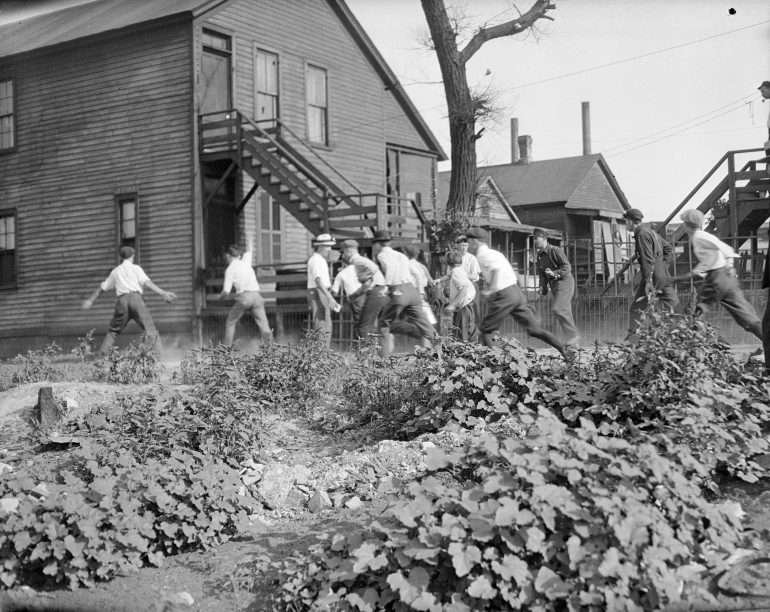
In response, Black residents armed themselves with knives and whatever guns they could acquire to protect themselves. Black World War I veterans, recently returned from combat, helped to organise Black men in efforts to protect the city’s Black residents and institutions.
A century later, Juanita Mitchell, who was seven years old at the time of the unrest and 107 when she recounted it, recalled that she and her family barricaded themselves in her Uncle Cecil’s hot, cramped upstairs room. They hid behind the piano as marauding white mobs roamed the streets of the Black community wantonly killing, maiming, beating residents, and burning their property.
A reporter for the Defender, Lucius C Harper, described his experiences on the streets: A mob pounced on him at the corner of 31st and Archer Avenue. Luckily, he escaped and hid as bullets from the police flew overhead. The police fired into crowds – regardless of race – in their attempts to restore order. Harper saw a woman writhing in agony after being shot in the arm and a man gushing blood after being shot in the back of the neck.
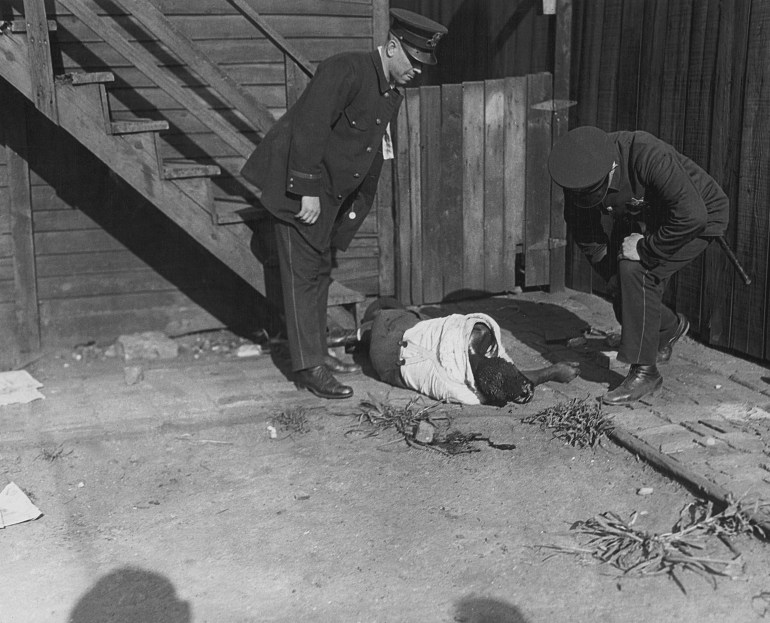
‘The maimed and dying’
Provident Hospital, established by a Black surgeon and located in the heart of the Black Belt, was quickly overwhelmed with emergency cases. The Defender reported that the hospital was filled “with the maimed and dying”.
“Every hour, every minute, every second finds patrols backed up and unloading the human freight branded with the red symbol of this orgy of hate. Many victims have reached the hospitals, only to die before kind hands could attend to them. So, pressing has the situation become that schools, drug stores and private houses are being used. Trucks, drays and hearses are being used for ambulances,” the paper wrote.
Local officials, the General Superintendent of Police John J Garrity and Mayor William Hale Thompson, refused to ask for military assistance. They ignored complaints that the city’s police were overwhelmed and did not have the capacity to control the rioting. Governor Frank Lowden followed the lead of local officials and waited to get a request for assistance from them. Days after the drowning incident, when it became clear that the rioting would not stop without outside help, the state militia was eventually called in. Although the militia, which consisted of between 5,000 and 6,000 troops, was put on alert on Monday night, it was not assigned to active duty until 10:30pm on Wednesday, July 30.
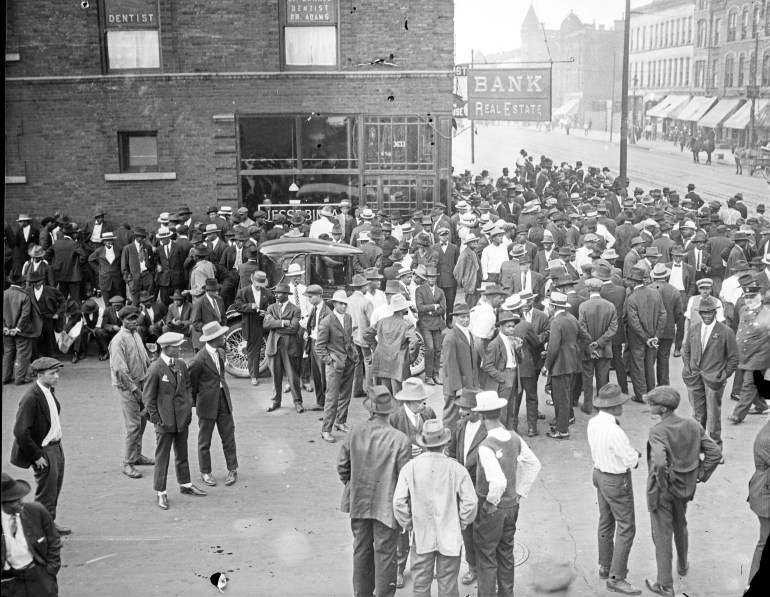
As long as the rioting continued, many Black people had to shelter in place. They could not get to work, obtain food and had no access to money. As a result, the meatpacking companies established pay stations at local community organisations to ensure that roughly 6,000 employees got their paycheques. Banks in and around the Black Belt also provided small loans of $2 and $3 to Black people, while the Urban League and the American Red Cross distributed food to Black families.
By the time the unrest finally ceased almost two weeks later, 537 people had been injured and 38 killed. The injuries included gunshot wounds, fractured bones, lacerations, and mutilations. In all, 23 Black people lost their lives and another 342 were injured. About 2,000 people, mostly Black, lost their homes to arson and other acts of vandalism.
White police officers arrested many Black people while white mobs ran amok. Finally, one exasperated judge, tired of seeing only Black defendants brought before him, said, “I want to explain to you officers that these coloured people could not have been rioting among themselves. Bring me some white prisoners.”
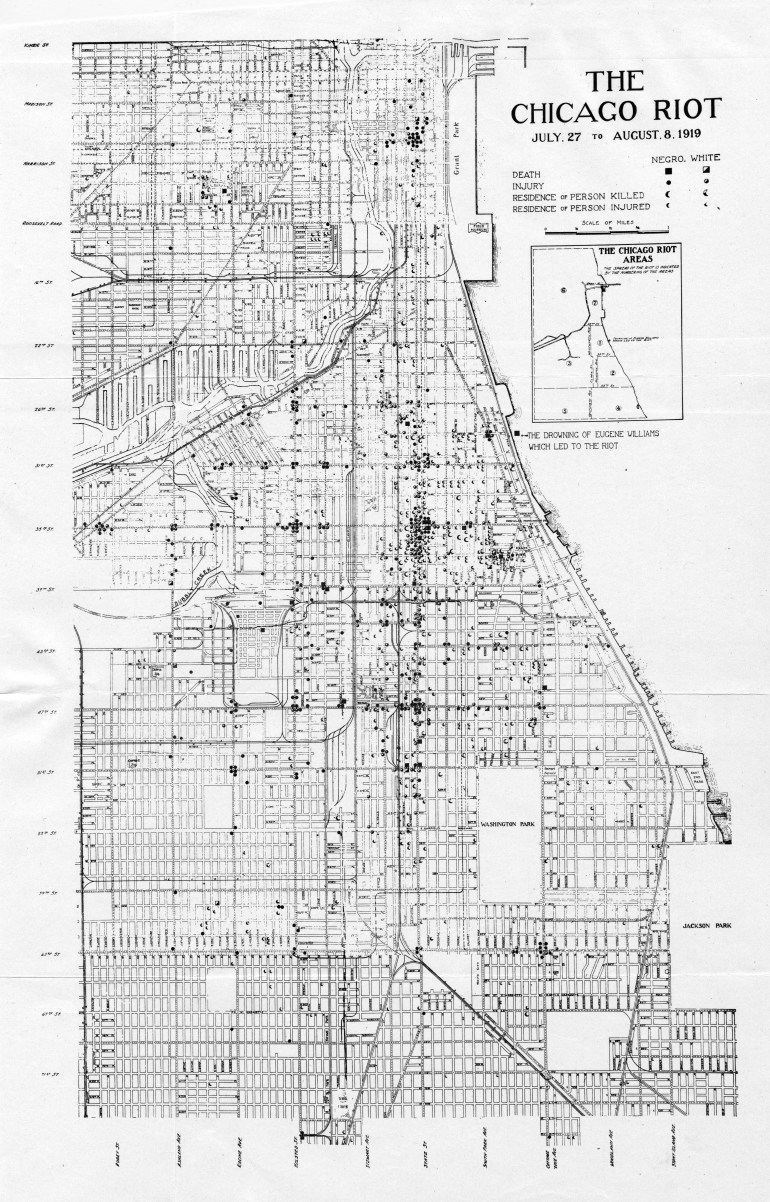
A smiling young man
Despite the furore caused by Eugenes’ drowning, not a single newspaper published a picture of him until August 30, more than a month after his death. That photograph appeared in the Defender and depicted a smiling young man dressed in formal attire.
Eugene was buried in Lincoln Cemetery on August 5, 1919, nine days after he died. James Crawford, who was also killed at 29th Street beach, was buried in the same cemetery the day before.
Though the four youths on the raft with Eugene witnessed his drowning, they did not speak to the authorities or any subsequent investigators. John Harris told Professor Tuttle years later that he had been afraid of his mother finding out he had disobeyed her by going swimming.
“I’ve never told it to the police or anything…We were forbidden to go swimming on Sunday, and I was more afraid of my mother than anyone,” he said. “They would look for us and ask who [were] the boys [who] were with him. We went to the funeral, and…[Eugene’s] mother knew me. And when I talked to her at the funeral, I told her how it happened.”
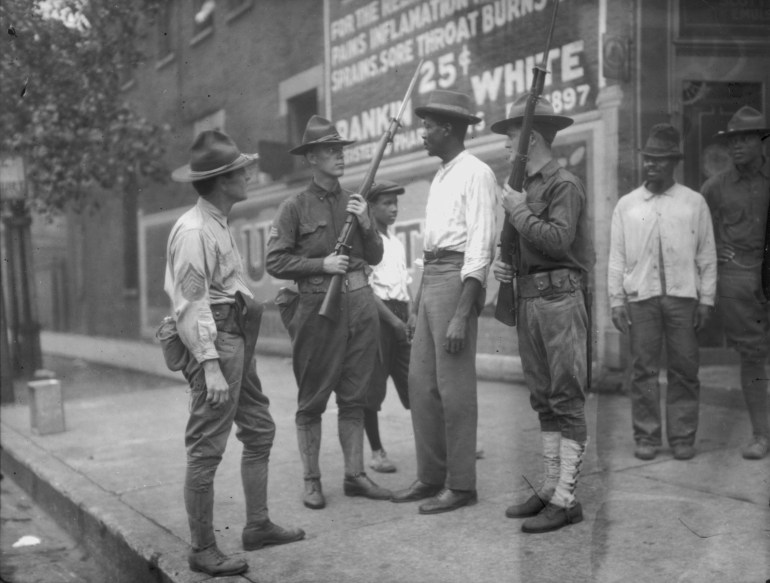
Questions arose and rumours spread about how well the boys on the raft could swim. The coroners described Eugene as “an athlete and expert swimmer”, but John believed otherwise. He said, “None of us were accomplished swimmers, but we could dive underwater and come up. We would push the raft and swim, kick, dive, and play around. As long as the raft was there, we were safe.”
John went on to describe the raft, the care the neighbourhood boys put into constructing it, and the pride they felt when they completed it. “We made a little raft, we worked on that a long time …. About four different groups of about 20 boys worked on this raft for about two months. It was a nice size – it was about 14 by nine feet. Oh, it was a tremendous thing.”
‘Our most grave and perplexing domestic problem’
Even before the rioting had stopped, concerned residents of Chicago came together to urge the governor to launch a thorough investigation into its causes. In response, the Chicago Commission on Race Relations – a nonpartisan group of 12 men (an additional man was added later) – was formed on August 20.
The commission, comprised of “distinguished representatives of both races”, had two newspaper editors (of the Defender and the Daily News), five lawyers, two real estate dealers, one doctor, one merchant, one government official, and one minister. Commissioners were assisted by 22 white and 15 Black researchers. The group was asked “to get the facts and interpret them”.
It completed its investigation in November of the following year, having interviewed hundreds of Chicagoans, held hearings, conducted surveys of residents, studied housing, workplaces, health care, and the transportation system. There were site visits to and interviews with the staff at parks, playgrounds, beaches, schools, churches, and a wide variety of community organisations. The commission also held 30 conferences, organised meetings with business leaders, interviewed police officers and met with government officials.
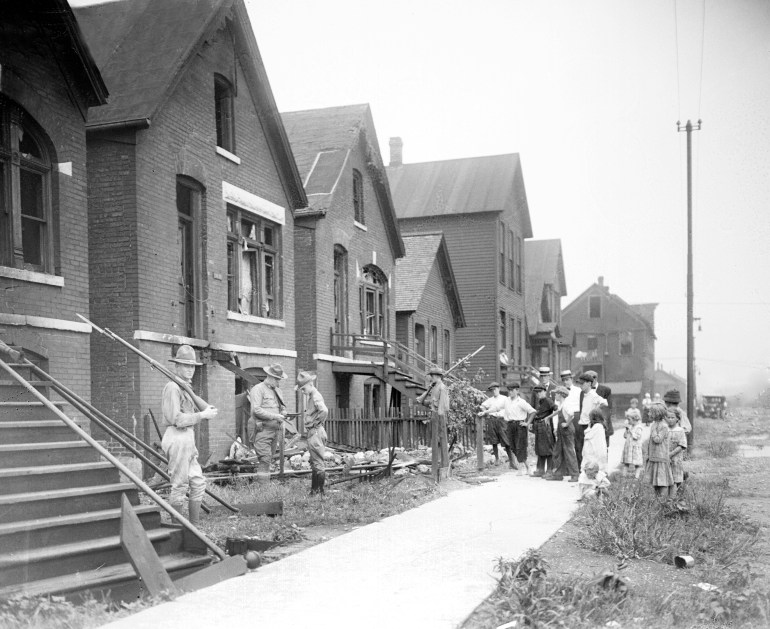
Its 672-page report, The Negro in Chicago, was published by the University of Chicago Press in 1922. The document began with the statement, “The relation of whites and Negroes in the United States is our most grave and perplexing domestic problem.” It then framed the challenge as the “Negro problem”.
The commissioners declared: “These riots were the work of the worst element of both races.” The group concluded that peace was obtainable “only after the disappearance of prejudice”. They asked the police to protect all the city’s residents and to enforce the laws fairly “without regard to colour”. It also called for improved housing, sanitation, schools, and recreational facilities.
The commission also scolded the media for its role in fomenting racial animus with sensational and inaccurate stories. “For a public which depends upon newspapers for its information an inordinately one-sided picture is presented. This emphasis on individual crimes specifying Negroes in each offense tends to stamp the entire Negro group as criminal,” it declared.
Victims of the race riot sued the city. In 1923, minutes of the Chicago City Council revealed that Luella Williams (Eugene’s father had died in 1921) and other victims of the race riot each received compensation of $4,500 (the equivalent of $68,545.79 today).
Today Eugene’s grave is difficult to find. It is tucked away in a corner of Lincoln Cemetery. It has no trees nearby, no beautifications nor adornments, not even a headstone.
The Chicago race riot was not an isolated event. Several race riots broke out across the country during the summer of 1919. Between May and October of that year, there were riots in 30 American cities, leading James Weldon Johnson of the NAACP to call it the “Red Summer”.
‘A loaded German Luger’
Within a decade of the riot, residential segregation had become even more rampant as racially restrictive covenants – clauses inserted in the deeds of property prohibiting owners from selling or renting to specific racial groups – were used to prohibit Black people from purchasing homes in many neighbourhoods in Chicago. Furthermore, realtors – white and Black – were expelled from the Chicago Real Estate Board if they sold property in white neighbourhoods to Black people, banks refused to provide loans to Black buyers to purchase homes located in white communities, and street gangs burned or vandalised the property of Black people who purchased homes or opened businesses in the white sections of the city. These practices continued well into the 1930s and 1940s.
Renowned playwright Lorraine Hansberry dramatises these dynamics in A Raisin in the Sun, a 1959 play documenting her family’s experiences as they moved from Chicago’s South Side to a new home that they purchased in the Washington Park neighbourhood in 1937.
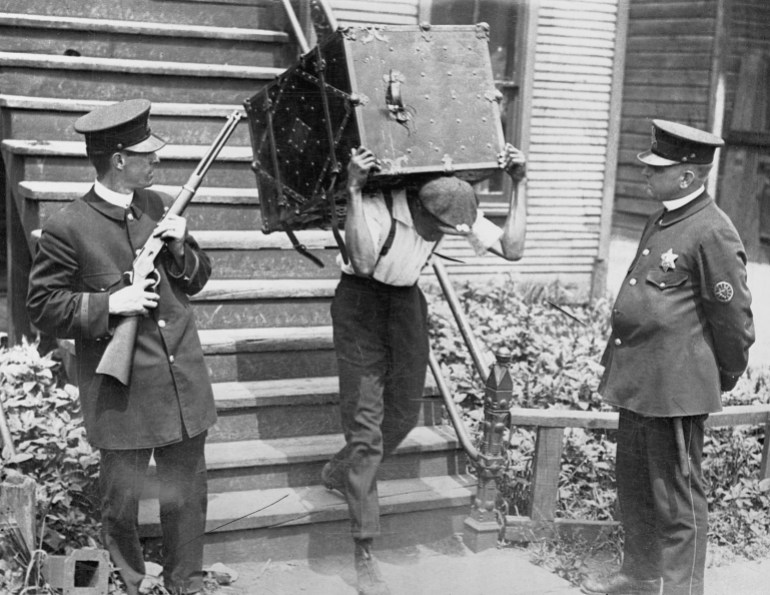
It was not only the firebombs and court orders to vacate the property they had purchased or police evictions that Black people moving into white neighbourhoods worried about. The children of such families endured incredible trauma.
Hansberry writes that she was “spat at, cursed and pummeled in the daily trek to and from school.” She also remembers her “desperate and courageous mother, patrolling our household all night with a loaded German Luger (pistol), doggedly guarding her four children, while my father fought the respectable part of the battle in the Washington court.”
Organisations like the NAACP adamantly opposed the blatant and increasing housing discrimination that Black people faced. They filed lawsuits and took landlords and white homeowners all the way to the US Supreme Court.
But neither the riot nor residential segregation could deter Black families from moving to Chicago. Today, Chicago presents a strikingly different racial profile than the one it had in 1919. According to the US Census, 29 percent of Chicago’s 2.7 million residents identify as Black, 33 percent are white, 29 percent are Latinx, and 7 percent are Asian.
The beaches are integrated and so are the parks.